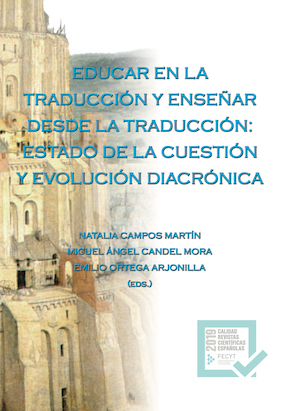The proper and precise jargon: A proposal for a detailed taxonomy of eponymic and derived eponymic terminology
DOI:
https://doi.org/10.7203/qf.24.16301Keywords:
terminology, onomastics, eponymy and derived eponymy, taxonomy, translation Abstract
Abstract
The translator of scientific and technical texts resorts to glossaries and not to onomastics to solve eventual dilemmas. And while it is a fact that there is no scientifically-ruled correspondence between the way we translate and the nature of the terminus technicus, it is also true –at least as far as we know– that there have been no attempts to first categorize and, eventually, relate them. The present paper results from the end-phase of a research already made public in some of its facets (Calvo, 2014a, 2014b, 2015, 2017a, 2017b, 2018). What we here propose and exemplify is a taxonomy of eponyms and derived eponyms valid for its main sets (geonyms and anthroponyms, plus the subsidiary ctisonyms: product names, including brand names and names of works of art) in which, imitating the taxonomy of biological sciences, we stipulate up to sixteen top to bottom branching specifiers in order to pinpoint, as much as possible, the linguistic, referencial and cultural characteristics –plus the empirically observable mode of translation– for only one specific term or its peer grouping.
 Downloads
Downloads
Downloads
Published
How to Cite
-
Abstract544
-
PDF (Español)520
Issue
Section
License
 Este obra está bajo una licencia de Creative Commons Reconocimiento-NoComercial-SinObraDerivada 4.0 Internacional.
Este obra está bajo una licencia de Creative Commons Reconocimiento-NoComercial-SinObraDerivada 4.0 Internacional.
Authors who publish with this journal agree to the following terms:
- Authors retain copyright and grant the journal right of first publication with the work simultaneously licensed under a Creative Commons Attribution License that allows others to share the work with an acknowledgement of the work's authorship and initial publication in this journal.
- Authors are able to enter into separate, additional contractual arrangements for the non-exclusive distribution of the journal's published version of the work (e.g., post it to an institutional repository or publish it in a book), with an acknowledgement of its initial publication in this journal.
- Authors are permitted and encouraged to post their work online (e.g., in institutional repositories or on their website) prior to and during the submission process, as it can lead to productive exchanges, as well as earlier and greater citation of published work (See The Effect of Open Access).



